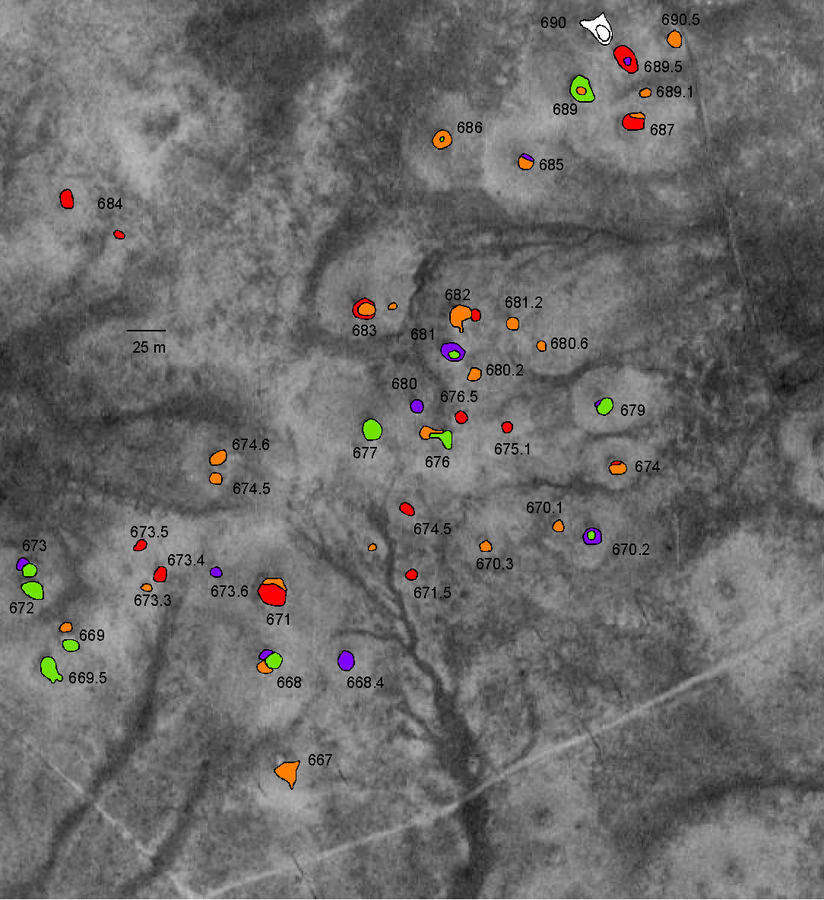
Three Gustavus students will present their independent projects this October at the 117th annual meeting of the Geological Society of America. The subjects of the students’ research include the composition of Tepee Buttes, and the relevance of color when categorizing garnets.
Geology majors Julia Anderson of Eagan, Minn.; Eleanor Bash of Minneapolis, Minn.; and Brian Goldner of St. Anthony, Minn. will travel to Salt Lake City, Utah, to illustrate their individual findings for the 6,200 geoscientists who are expected to attend the conference this year.
Through their research, Anderson and Bash determined that the current theory on the distribution of various rock types in Tepee Buttes is incorrect. Tepee Buttes are conical rock formations that dot the western landscape of the United States, and can date as early as 76 million years ago.
“Geologists thought that the rock was categorized in concentric circles around the center of the butte,” Bash said. “But we now know that’s not always the case.”
The research began in the Spring semester of 2005, with reading about previous research conducted at the sites. After searching, mapping, and taking samples from the buttes in June, they returned to Gustavus to analyze their findings. Anderson studied rock samples at a microscopic level to determine the process that led to their formation. Meanwhile, Bash mapped the composition of the buttes using GPS technology and aerial photos.
Anderson and Bash have yet to perfect a theory that works to explain the different layers and geographies of the rock within the buttes, but they can show that the previously believed notion is incorrect.
The research conducted by Anderson and Bash was supervised by Professor Russell Shapiro (Geology) and funded through a National Science Foundation grant for Biogeosciences.
“Gustavus is the lead institution on this project,” Shapiro said. “We are working with colleagues and students from Oberlin College and the University of California, Riverside.”
Goldner, also presenting to the Geological Society in October, worked to refine the use of certain garnets as indicators to find diamonds.
“Often when one finds a certain type of garnet in the right environment, it is a good indication of diamonds nearby.” Goldner said. “There are twelve types of garnet, ranging from G1 to G12. Only a few of these types are good indicators of diamonds,” Goldner said, referring to the G9 and G10 garnets. “And they are the rarest of the twelve types.”
Goldner’s results show that one can distinguish between some types of garnet by color alone. This discovery allows for some categorization by color, lessening the need for chemical analysis, and making the process of finding diamonds easier and less expensive. Goldner’s color-identification method does not work for all types of garnet, but is a step toward improved diamond exploration.
Professor Jim Welsh, chair of the Gustavus geology department, suggested the project because he knew of Goldner’s interest in research involving precious stones. Goldner also has been working with the Minnesota Geological Survey, which supplied garnet samples to aid in Goldner’s research.
Attending the four-day conference in Salt Lake City is a noteworthy honor for the three Geology majors.
“This is the largest gathering of the year for academic geologists,” Shapiro said. “The intent is for researchers to present their latest results to let everyone else in the community know what is going on.”
Leave a Reply
You must be logged in to post a comment.